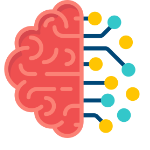At AppsTec, our unwavering focus centers on delivering customer-centric technology solutions meticulously designed to streamline, innovate, and optimize business productivity. Our overarching goal is to elevate performance, ensuring optimal returns and favorable outcomes for our esteemed customers.
As a distinguished systems integration and consulting firm, AppsTec Technology Services takes the lead in providing advanced IT services that empower businesses on their journey to modernization, innovation, and effective digital competition. By leveraging the latest technologies, we offer a comprehensive suite of services, including the development, integration, migration, maintenance, and re-engineering of applications.
Our expertise spans a wide array of offerings, from Oracle EBS, Oracle Cloud, Salesforce, Digital Transformation, RPA, and IT Sourcing to Digital Marketing Services encompassing Pay-Per-Click (PPC) Advertising, Search Engine Optimization (SEO), Social Media Marketing, Email Marketing, Content Marketing, E-Invoicing Solutions, Oracle Technical Services, Support and Managed Services. As a trusted recruitment and consulting firm, we are also an enterprise mobility and mobile app development company.
AppsTec proudly partners with industry leaders such as Oracle, Salesforce, Kore.AI, and Dmacq, cementing our commitment to providing unparalleled solutions that drive success in the ever-evolving digital landscape.
Years of Experience
Customers Satisfied
Projects Delivered





At Appstec, we cater to our client's needs and possess the capability to deliver cutting-edge technology solutions tailored to their specific requirements.

We ensure your IT tools align seamlessly with industry standards and specifications.

We assist in delivering optimal upgrades, updates, and add-ons for your application needs.

For cross-platform upgrades (iOS/Android), we customize to meet your app's specific requirements.

Our focus is on ensuring the smoothest, most efficient completion of your application process.

We offer ongoing maintenance and support services for your complete satisfaction.

Our support staff conducts continuous testing and maintenance for your application, ensuring your peace of mind.
AppsTec was chosen for their wealth of experience, assuring a professional execution of the project that prioritized client satisfaction within the agreed budget and timeline. The outcome met our expectations, and we extend congratulations to AppsTec, wishing them success in all their future endeavors.
AppsTec was selected for their unwavering commitment, delivery capabilities, and their recognition of the significance of forging a lasting partnership. In our initial implementation of Oracle R12 Financials, AppsTec established the groundwork for a successful project. Beyond the initial implementation's success, AppsTec persisted in supporting us to optimize processes, generating substantial value for our business and enhancing the efficiency and effectiveness of our services. There was no question that AppsTec shared the same dedication to the project's success as we did.
I am delighted to recount my experience working with the AppsTec team throughout the launch and development of our HR App. The team demonstrated a high level of professionalism and adaptability in their approach. We are exceptionally pleased with the outcomes of the product and wholeheartedly recommend them for future projects, both within the organization and externally. In our relatively brief collaboration, the entire AppsTec team seamlessly integrated with our internal project team, and we eagerly anticipate future collaborations with all of you.